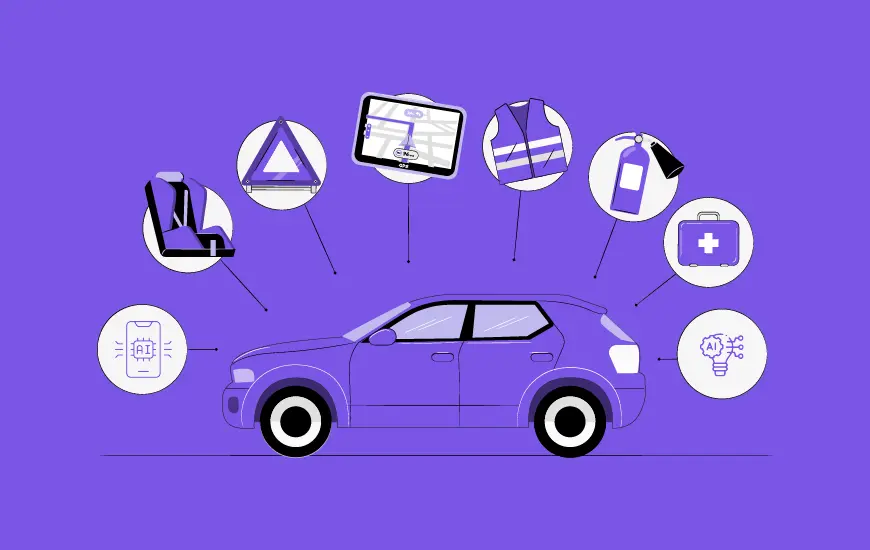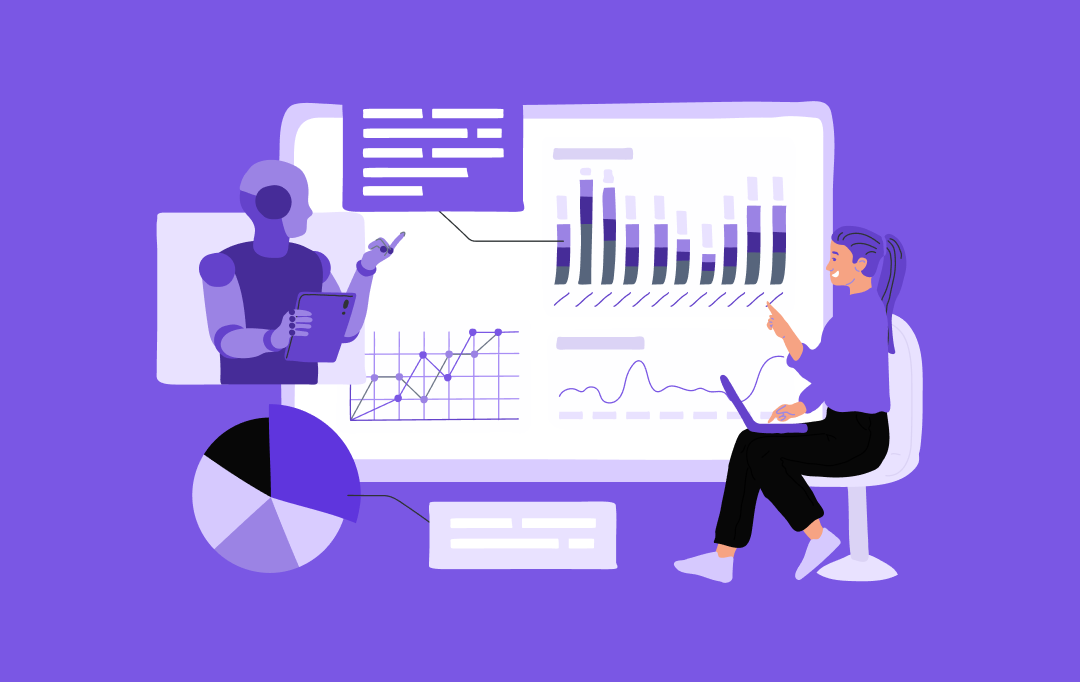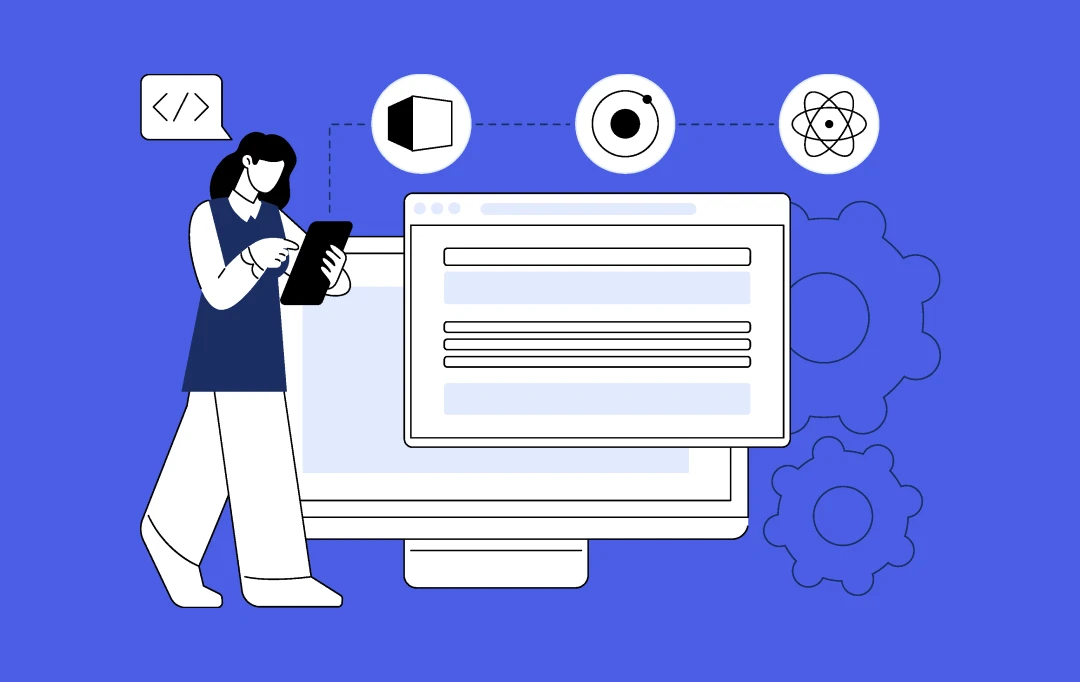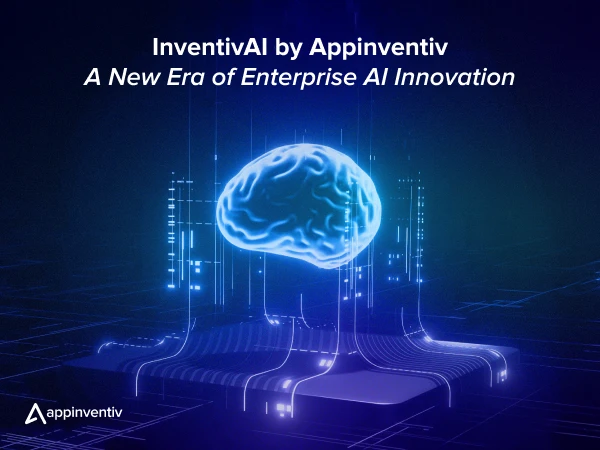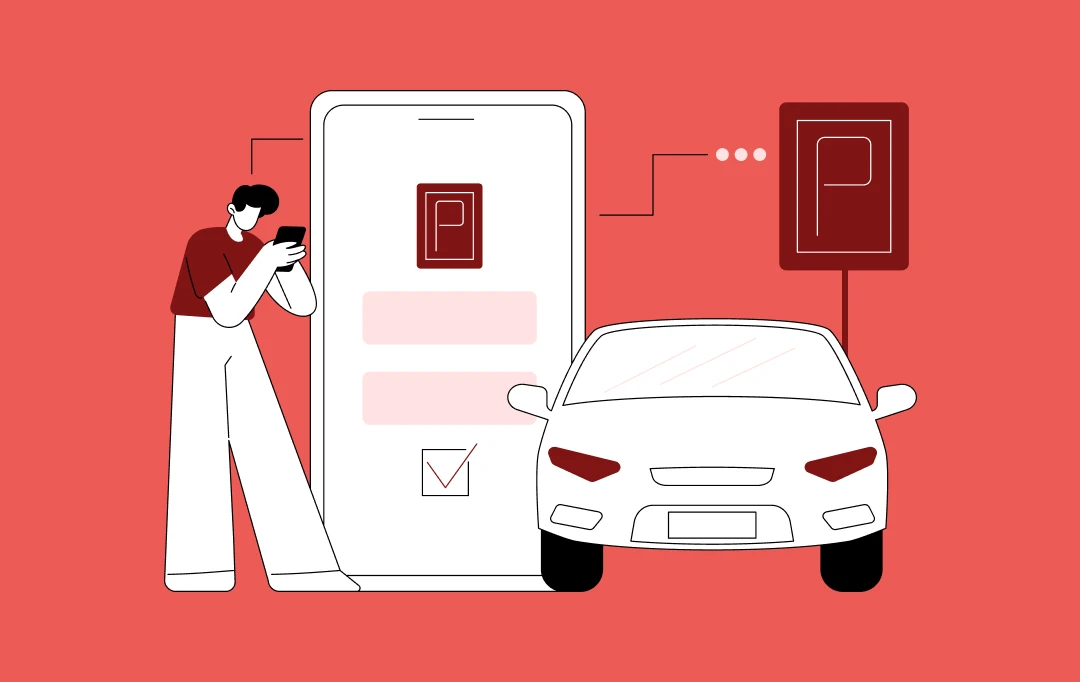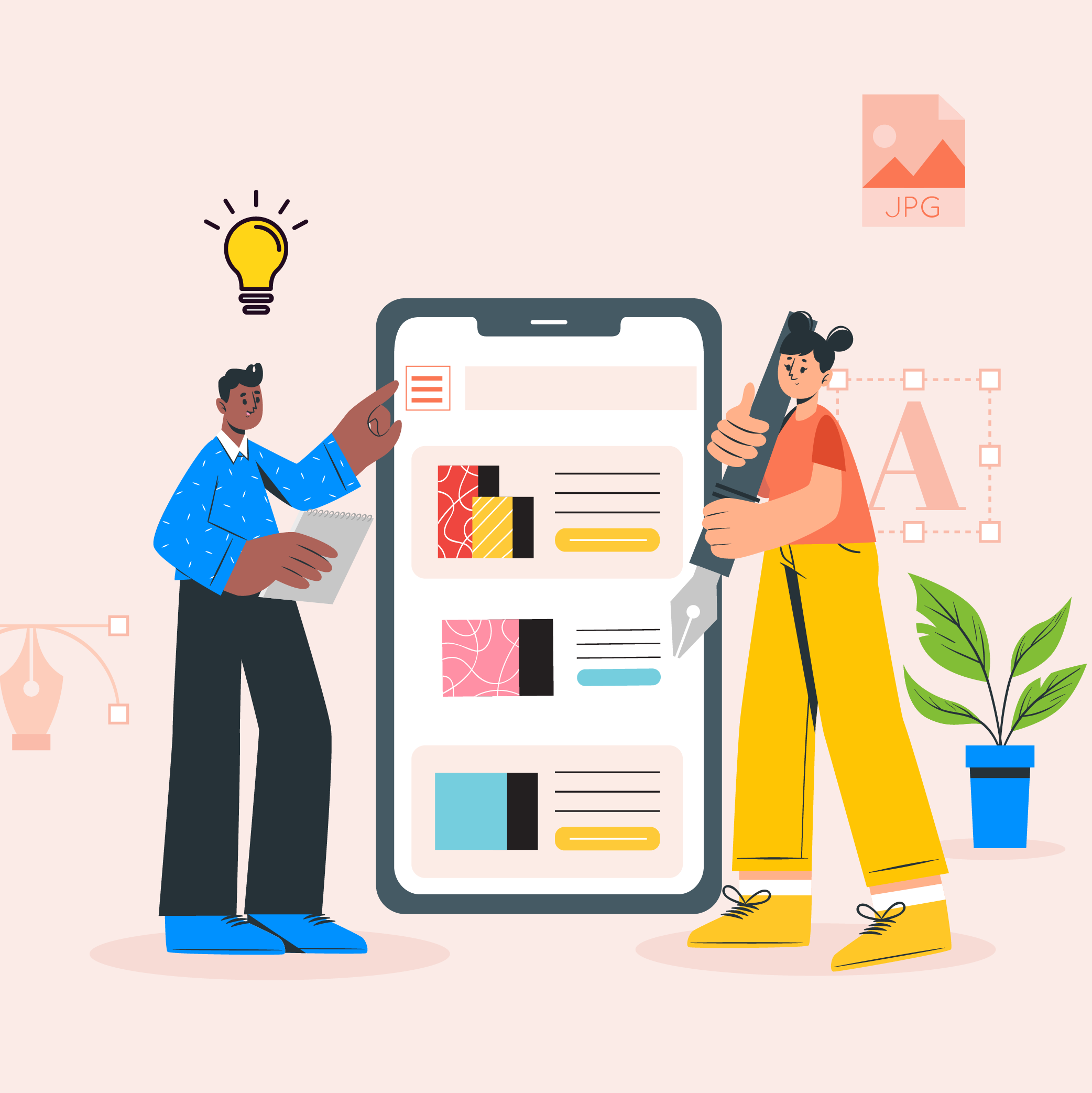- Top 10 Tips to Speed Up Android Development
- 1. Use the Latest Tools
- 2. Low-Fidelity Wireframes are Speedier
- 3. Outsource Specialized Development Steps
- 4. Go Lean
- 5. Hire Experienced Developers
- 6. Delegate Off-Core Activities
- 7. Use Hybrid App Development
- 8. Opt for Automated Testing
- 9. Cross-Platform Development Tools
- 10. Create Build Variants
- Get a Scalable Android App Built by Appinventiv Experts
- FAQs
Any app with a quick time-to-market can make an enormous difference in a market fraught with stiff competition. On the other hand, an app that takes forever to build and deploy can crash and burn even before it goes off the shelf.
Developing a mobile app is an expensive process, as bringing ideas into reality requires time and effort, expenses, and of course, following the top tips to speed up android development.
One approach to keep costs from spiraling out of control is to decrease the application development time. In the realm of mobile apps, time is money, so the more you spend working on your app, the more it will cost.
CEOs are constantly struggling to meet deadlines and take their app to the market before competitors pinch the idea. In this tussle between speed and quality, quality is often sidelined, resulting in a product that doesn’t meet your or your audience’s needs and expectations. This might be because they are missing out on following the top tips to speed up android development.
As per Statista, more than 2.67 million apps will be deployed in the App Stores by the end of 2023.

Accelerating android development cycle is, therefore, the need of the hour now, as with the passage of time, millions of apps are now jostling in the app store, giving each other a tough competition to be at the forefront.
Since boosting the android application development speed is now a major concern for developers, we have compiled a set of handy android app development tips and tricks to help you quickly create android apps without compromising on quality.
Top 10 Tips to Speed Up Android Development

Follow these top 10 android development tips that can help you speed up the process:
1. Use the Latest Tools
The top tips to speed up android development is to utilize the latest tools and technologies. Often, android developers face the same dilemma: too much to do and too little time to do it! Designing, prototyping, coding, testing, debugging, and the list of tasks goes on. While some of these vital steps have no shortcuts, there are valuable tools to help with the others.
Here’s our rundown of must-have android development tools for developers that can speed up the android app development process:
A. Genymotion
A sleek emulator that can simulate built-in sensors that a device model has. This emulator supports all existing versions of Android, eliminating the need for re-configuring for different devices.
B. Hierarchy Viewer
Hierarchy Viewer is a great tool for viewing your app’s layout hierarchy or tree, analyzing its flaws for debugging and testing purposes. This tool, available in Android SDK, helps speed up android app development by letting you merge and remove redundant elements in your app.
C. LeakCanary
Detecting memory leaks is a specialized function of this tool. These bugs are very hard to debug, and the tool will ensure no leakage escapes your notice. Debugging becomes rapid and mobile.
D. Vysor
This tool helps android app makers share screens between their workstations and Android devices using a Chrome plug-in. The tool solves most developers’ challange of rooting devices via USB. With this tool, you can share app features live with the client and receive instant feedback, which is always great for the development process.
E. Butterknife
An excellent tool to improve the coding rate and readability of your boilerplate codes. This tool is a great time saver for all businesses looking to reduce app development time.
2. Low-Fidelity Wireframes are Speedier
Wireframing is an essential step in the app development process. Using low-fidelity wireframes is a better option than high-fidelity ones. These wireframes are less detailed and more fluid but give developers and UI designers a clear enough picture.
Going headfirst into coding is not advisable, and most experienced Android app developers in New York, Florida, Texas, and other areas know this. The most crucial first step is to get designers, developers, coders, and project managers on the same page. Low-fidelity wireframes do just that. They are quick to develop and are a good blueprint for the entire development team.
3. Outsource Specialized Development Steps
In-house app development is not everybody’s cup of tea. The app market is fast evolving, and new apps are entering the market every day. To remain competitive, timely, and relevant, one can outsource app development to a skilled and efficient android app development company. Even if you can code or design an Android app, use domain experts to put the whole product together and maintain it. Not only will you get better returns on development costs, but you will also offload the hassle of running tasks that will be better handled by experienced professionals.
A common misconception businesses share is their misplaced fear about the cost of outsourcing. Android software development companies mostly have flexible engagement models that can match product development costs to your budget. Fixed cost; time and material; and build, operate, and transfer models can be evaluated to determine a business solution that works in your favor.
4. Go Lean
One of the best strategies for swift android development is to launch a Minimum Viable Product (MVP) with just the basic features and no frills instead of waiting to develop and launch a full-fledged app. The MVP will help you collect user data about what’s working and what’s not. Use the build-measure-learn feedback loop to get invaluable lessons about customer feedback. This approach diminishes the risk element of your app and makes for an app that is more likely to appeal and succeed.

Another facet is using short iterations or “sprints” to break up the entire app model into smaller, doable cycles. Each sprint is complete in itself, it has the entire gamut of android app development steps and results in an improvised version of the previous sprint product. Speed up android and go agile in your development process. Reduce redundancy of effort and resources. This not only helps reduce development time but also saves production costs. And, of course, the ultimate benefit of android app development is a risk-free product that starts churning ROI from the moment it’s launched.
5. Hire Experienced Developers
Once you are settled with the development platform and the tools, now comes an ideal opportunity to hire the best android developers to accelerate android application development projects. While hiring android developers, one thing that should be considered is their experience and flexibility. Why? Because if android application developers are experienced, this means that they will have proper knowledge or information on every issue that may come up during the app development process.
Also, if the android app maker is interested in learning and adjusting to new technologies and platforms, that will enhance and accelerate your app development process. Adaptability plays an important part in deciding the interest level of your development group. Thus, you should employ android developers that are prepared to learn and update their abilities according to the project.
Also Read- How to hire a dedicated development team?
6. Delegate Off-Core Activities
One of the android development tips is to always make a wise choice to offload additional activities such as enhancing app engagement, measuring app analytics, and converting free subscribers to premium ones. These activities consume a lot of time and are better off with pre-designed applets available on mobile engagement platforms. These applets can be incorporated into your ready app with just a few lines of code. Applets enable activities such as sharing tools, offer notifications, new features tools, and feedback tools.
7. Use Hybrid App Development

Cross-platform apps allow you to code for one app and get multiple apps that can run on all covered platforms. Hybrid app development is speedier than native app development, though it has its own set of drawbacks. But for quick market penetration, cross-platform apps may be the best choice. Later, one can go in for native apps that are more inherent, fluid, robust, and focuses on app performance and android build time optimization.
8. Opt for Automated Testing
Automated testing is a sure-shot measure to get secure, fully-tested apps in a fraction of the time than the ones deploying manual testing. This improves test coverage, reduces testing time, and guarantees a bug-free product that is market ready.
Bonus Read- The Mobile App Testing Strategies that Appinventiv Follows
9. Cross-Platform Development Tools
Cross-platform is the most convenient way to decrease app development time. The cross-platform tools allow users to focus on numerous mobile platforms with a similar codebase, eliminating the time one would typically spend deciphering, reworking, and re-compiling the same code to work across various platforms.
Developing separate native applications for every platform is costly, while a hybrid app utilizes a single shareable code, which assists you in saving your pockets. Cross-platform applications have a native look and feel, which is great for user experience.
There are plenty of cross-platform development tools, but some of the most used tools include:
- Xamarin
- Ionic
- Flutter SDK
- React Native
- Adobe Phonegap
10. Create Build Variants
Loading your app with unnecessary configurations can slow down your app’s incremental builds. Retain only those configurations in your app that are required in its development and release versions. Don’t waste time and effort compiling additional resources that add little value. Such resources include screen density resources and additional language localizations.
Get a Scalable Android App Built by Appinventiv Experts
To beat the competition and meet deadlines, strategically divide time according to the stages of android app development. A lost minute in android application development services can result in significant financial damages. A good mobile app development company will closely monitor development tasks to ensure that your app launches as quickly as possible!
Fill up the form through this link and hire android app developers in USA that will help you validate and convert your app idea into an efficient product or get custom android applications for your business.
FAQs
Q. What are some ways to speed up the android app development process?
A. Follow these android app development tips and tricks to stay ahead of the competitive curve:
- Longer release cycles
- Use the minimal (Agile) approach
- Construct alternative options
- Utilize wireframes with low-fidelity
- Aim to develop hybrid mobile applications
- Go for automated testing
Q. Which tools and frameworks can help speed up android app development?
A. Some of the key tools and frameworks that are well-liked by the developer community in the android app development industry include Ionic, Flutter, React Native, Corona SDK, and PhoneGap, to name a few.
Q. What are the top android development best practices?
A. If you want to improve your chances of success, there are a few key considerations you should always keep in mind. Here are a few crucial android development best practices that should never be overlooked when creating an app.
- Select an appropriate development strategy
- Study the android documentation
- Make your coding consistent
- Uphold a high standard of coding
- Keep deep levels out of your layouts
- Observe the design
- Create applications quickly with Flutter
- Always include unit tests
Q. What is the development process of android application?
A. Here is the step-by-step guide to the development process of android application from scratch:
1. Focus on the main concept
A great application first needs a wonderful concept. Before moving on, you must be confident enough that your fundamental understanding of the application, available resources, and problem-solving capacity is unambiguous.
2. Frame strategy for application development
After finishing the design of your android application, you must concentrate on your app development plan. It serves no purpose to depend on a flimsy plan that might ultimately let you down in the near future.
In order to develop the best strategy, one must examine market trends and focus on the actual requirements of the users.
3. Android wireframing
The main components of the wireframe are the application’s features, layout, and specifications, which further aid the creator in determining the precise requirements. This wireframe aids in coordinating your ideas and business strategy with the development firm.
4. UI/UX design
An application’s graphical representation that includes all of the user-interactive components, such as clickable buttons, texts, sliders, and images
5. Phase of app development
The back-end organization and general application layout are the main areas of emphasis for the android development team. Through effective coding, the developer implements strategies and adds features in accordance with user needs and business models.
6. Mobile application testing
Once the application’s coding and design are complete, it is time to try it and look for any bugs. The testing expert examines the application to look for any flaws that might cause a problem with its general functionality.
7. Deployment
The deployment of the application in the app stores is the last step. Additionally, the description of the application on the Store includes information about how to use it, its capacity for problem-solving, and its characteristics. The APK file for the application is then submitted for approval after these procedures are complete.
Q. What is the android app development timeline?
A. There are typically 4 stages of the android app development timeline. This includes developing and researching ideas (2-3 weeks), dimensions and style (2-4 weeks), development and designing for apps (3-6 months), and testing and deployment (3-6 weeks).


- In just 2 mins you will get a response
- Your idea is 100% protected by our Non Disclosure Agreement.

How Much Does It Cost to Build a Food Delivery App Like Deliveroo?
In Europe's culinary landscape, the food delivery industry has flourished, revolutionizing the gastronomic experiences for millions of people. This surge is driven by factors such as busy lifestyles, increasing demand for diverse cuisines, and the recent emphasis on contactless services. As consumers increasingly look for the convenience of doorstep dining, businesses entering the food delivery…

How Much Does It Cost to Develop a Food Delivery App like Glovo?
Food delivery businesses have progressively increased in the last few years, assisting companies in augmenting operational efficiency by prioritizing customers. Behind the success of food delivery businesses, apps like Glovo play a significant role helping through strategic execution, targeting audiences, and enhancing customer retention. Building a food delivery app like Glovo is a strategic process…
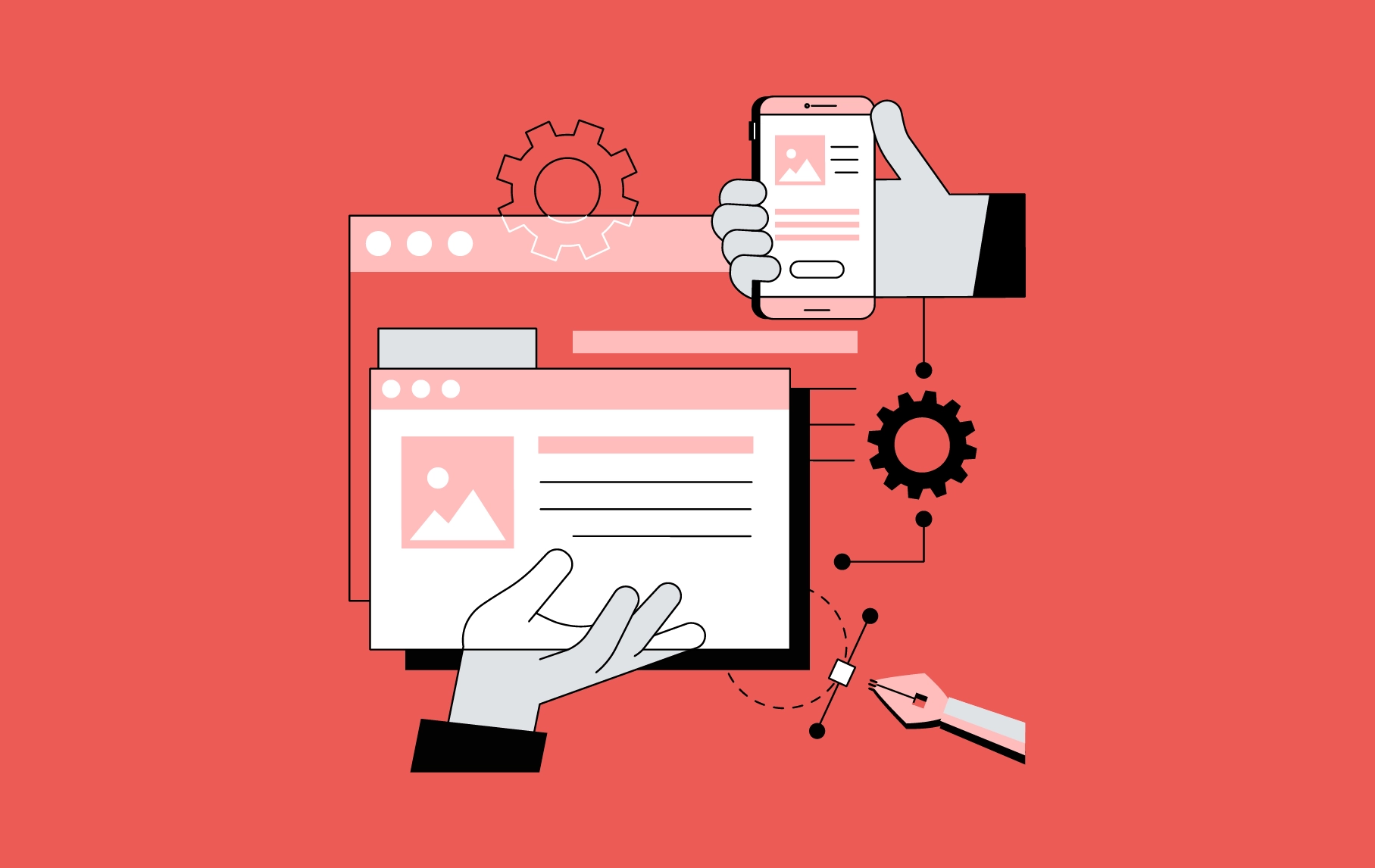
How Much Does It Cost to Build a Translation App Like DeepL?
When it comes to the evolving global digitization, the imperative for effective communication across linguistic borders has become more pronounced than ever. Now, stepping into the forefront of this linguistic evolution is DeepL, a translation app that addresses the need for effective communication across languages in the digital landscape. It stands out by using advanced…








